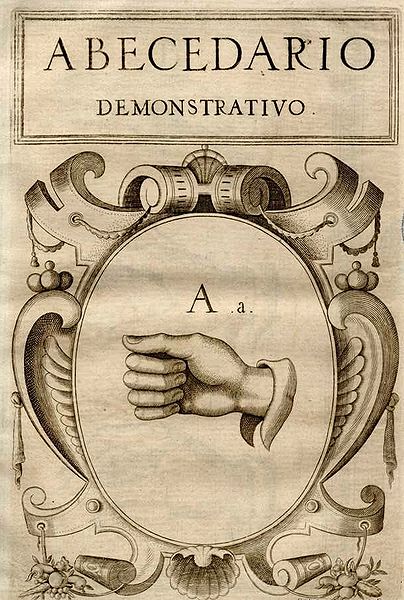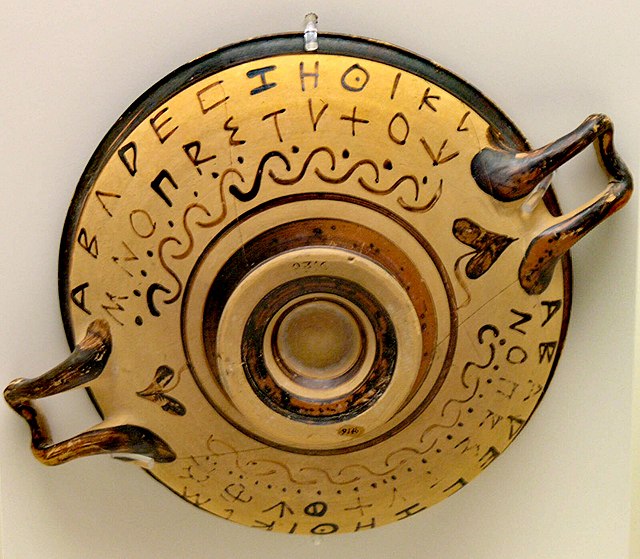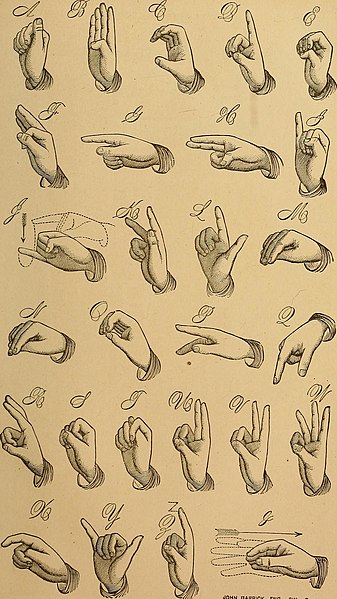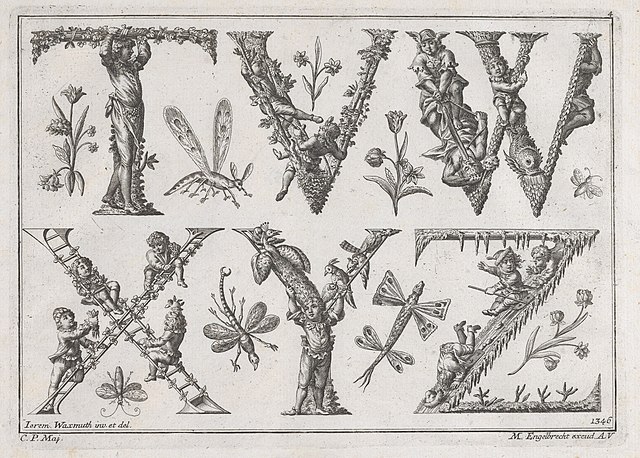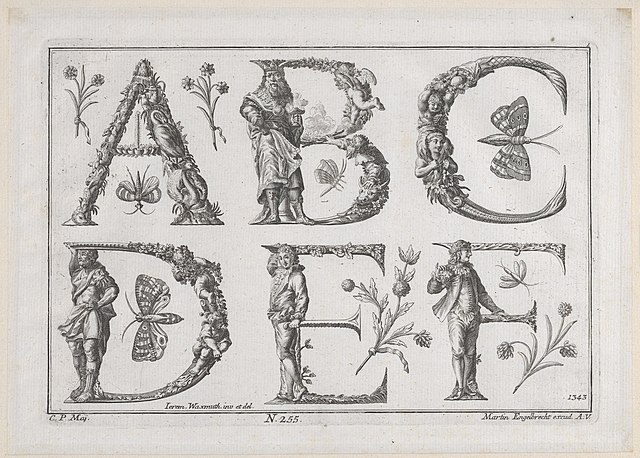Fingerspelling is the representation of the letters of a writing system, and sometimes numeral systems, using only the hands. These manual alphabets have often been used in deaf education and have subsequently been adopted as a distinct part of a number of sign languages. There are about forty manual alphabets around the world. Historically, manual alphabets have had a number of additional applications—including use as ciphers, as mnemonics and in silent religious settings.
Ukrainian manual alphabet
1494 illustration of a finger alphabet and counting system originally described by Bede in 710. The Greek alphabet is represented, with three additional letters making a total of 27, by the first three columns of numbers. The first two columns are produced on the left hand, and the next two columns on the right. Luca Pacioli modified the finger alphabet to the form shown above, where the handshapes for 1 and 10 on the left hand correspond to the 100s and 1000s on the right.
A
B, C, D
In a writing system, a letter is a grapheme that generally corresponds to a phoneme—the smallest functional unit of speech—though there is rarely total one-to-one correspondence between the two. An alphabet is a writing system that uses letters.
Ancient inscription on a vase featuring Greek letters
The American manual alphabet, an example of letters in fingerspelling
Engravings of decorated Latin letters, from the 18th century (note the lack of a J and a U)
Image: Decorated Roman alphabet MET DP855610



